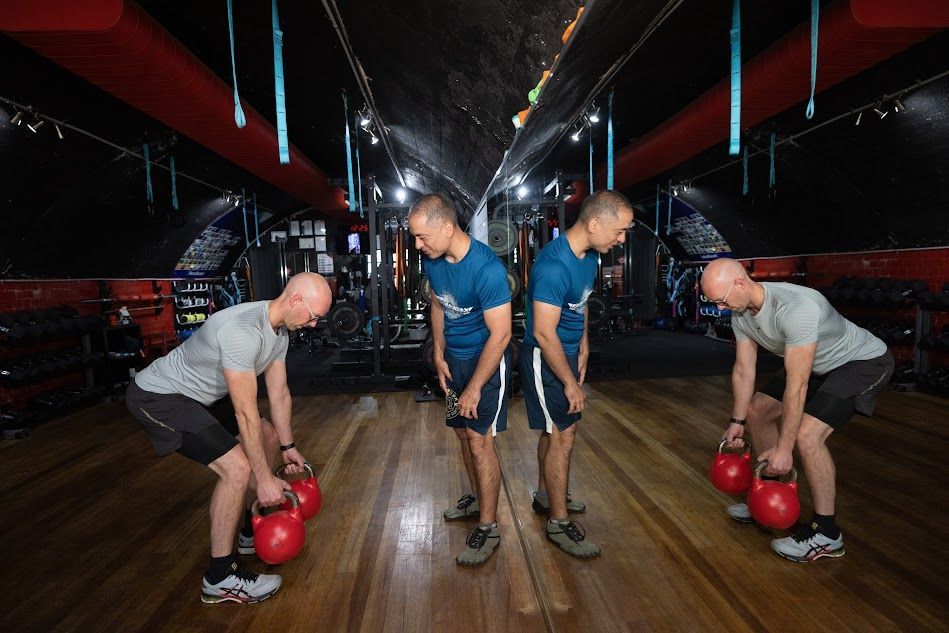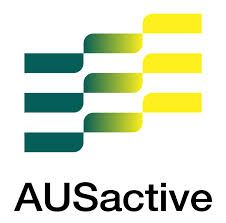Live Strong, Not Just Look Strong: Foundations First Training for Over‑40 Bodies
Looking strong means nothing if you're breaking down. Here's a foundations‑first training plan for Forty+, Injured and Time-Poor (F.I.T.), plus a bonus Metabolic Age Calculator to help you track where you're at.
The truth is, I'm not interested in making you look strong if, underneath, you're crumbling. The goal is physical confidence you can trust—built on order, dose and timing that fit you.
Foundations‑first training builds repeatable strength by restoring positions, matching load to readiness, and sequencing habits so your body adapts without flare‑ups. Looking strong isn't the same as living strong; foundations beat short‑term "wow".
The Right plan = proper order, dose, timing for your body today. - Start with a baseline and use our Metabolic Age Calculator to focus your next steps.

The Real Goal:
Physical Confidence You Can Trust At 40+, with a few old injuries and a busy life, it's easy to do what looks "right on paper" and still feel like you're forever yo‑yoing.
You train, eat "healthy," prioritise sleep, yet progress stalls or wildly swings. Not because you're lazy or unmotivated, but because the work isn't in the correct order, dose, or timing for you.
As an in-person and online Personal Trainer, I won't chase short‑term wow that creates long‑term problems. Foundations first. Always. You don't just need to look strong—you need the supports in place to live strong.
Why Good Effort Still Fails (for Over‑40, Injury‑Aware, Time‑Poor Bodies)
1) Order matters. Mobility → control → capacity → intensity. Skip steps and you rehearse compensations.
2) Dose matters. Your recovery sets the ceiling. Stress, sleep, and daily load determine how much you can adapt—not your willpower.
3) Timing matters. Choose the proper focus for right now. On red‑flag days, decompression and isometrics beat max volume.
4) Positions beat poundage. If ribs, pelvis, shoulders, and hips aren't stacked, extra volume amplifies strain.
5) Pain is data, not a badge. Productive muscular effort ≠ , joint/nerve irritation. The latter steals tomorrow's session.
Client Story: When "Healthy Habits" Still Don't Work
"Mary" (50s) had a health scare and went all‑in on trending "healthy" habits—everything at once. Despite the effort, the results were patchy. We stripped away the noise and rebuilt around her needs: - Two purposeful strength sessions/week: repeatable templates, controlled tempo, innovative progression. - Habit stacking: protein anchors, hydration, and simple wind‑down strategies. Within weeks, her joints calmed, sleep and stress improved, and momentum returned. Soon after, visceral fat trended down, resting HR steadied, and her metabolic age improved—because the work finally matched the person.
Within weeks her joints calmed, sleep and stress improved, and momentum returned. Soon after, visceral fat trended down, resting HR steadied, and her metabolic age improved—because the work finally matched the person.
Start here: Get your baseline using our free Metabolic Age Calculator and build from data, not guesswork.
The Foundations‑First Framework (Step‑by‑Step)
Step 1: Stocktake honestly. Injuries/conditions, strength levels, cardio tolerance, movement quality, nutrition, and stress. Write it down.
Step 2: Establish a baseline. Screen posture and movement; calculate metabolic age to understand your current health load and recovery capacity.
Step 3: Fix the source, not the symptom. Address the driver of flare‑ups (e.g., hip shift, rib flare) with targeted drills before adding volume.
Step 4: Lift with intent. Think practice, not punishment. 6–10 total complex sets per session beats marathon circuits when you're rebuilding.
Step 5: Eat and hydrate for your goal. Use protein anchors at meals, steady fluids, and regular meal timing to support repair.
Step 6: Protect sleep. Enough quality + quantity of sleep to restore you.
Step 7: Keep it dynamic. Life changes. Adjust the plan to your season and readiness before breakdown happens.
Step 8: Keep showing up. Win the easy days, manage the hard days, and don't skip the in‑between.
30–45 Minute Session Template (Repeatable)
Pre‑Workout Neuromuscular Activations (8–10 min):
- 90/90 breathing with reach
- 2 mins (restore rib–pelvis stack)
- Wall slides with posterior tilt — 2×8 (scapular control)
- Hip hinge pattern with dowel — 1–2 mins (hip dissociation)
- Glute bridge iso‑holds — 2×20–30s (posterior chain activation)
- Band pull‑aparts (slow) — 2×12 (mid‑back activation)
- Dead bug or Pallof press iso — 2×20s/side (anti‑extension/anti‑rotation)
Strength (20–28 min):
- A1 Supported Row (iso 20s → reps 8–10) — 3 sets
- A2 Incline Push‑Up or DB Press (tempo 3‑1‑2) — 3 sets
- B1 Trap‑Bar or KB Hinge — 3×6–8
- B2 Anti‑rotation Press — 2×8/side
Finisher (4–6 min, by readiness):
- Bike tempo intervals or incline walk — smooth breath, no joint aggravation.
Traffic Light Progression Guide:
Gauge where you're feeling during your workouts and adjust accordingly
- Green: Increase load slightly or add a set.
- Orange: Slow down, prioritise tempo and positions.
- Red: Take rest breaks as needed, focus on belly breathing; skip the finisher until you feel you're orange or green.
Practical Nutrition Guardrails
(Think Simple)
- Protein anchors at each main meal.
- Hydration: steady fluids across the day.
- Meal timing that supports training windows and sleep.
- Wind‑down: 30–60 mins screen‑light routine to actually restore you.
Seasonal Considerations
- Hot days and long commutes? Favour indoor or earlier sessions, and a focus on hydration.
- Winter? Extend warm‑ups and consider sled/bike swaps for joint‑friendly conditioning.
Safety & When to Refer:
- Persistent nerve pain, sudden strength loss, red‑flag symptoms, or unresolving joint swelling warrant medical review.
Ready to Start?
Check your baseline with the free Metabolic Age Calculator (2 minutes). Use your result to set the right order, dose, and timing for your next phase.
Prefer a guided start? Book a complimentary Smarter‑Start Consult and we’ll map your first two weeks around your baseline.
FREQUENTLY ASKED QUESTIONS
Can I train through mild pain?
Muscular effort is fine; joint or nerve pain is a stop sign. Adjust range, switch to isometrics, or pause and review.
How many sessions per week work best at 40+?
Most busy pros win with 2–3 focused sessions plus low‑impact conditioning.
Do I need special equipment?
No. We prioritise positions and tempo using what you have; load progresses as control improves.
What if I'm inconsistent?
Design for your worst week first. Smaller, repeatable wins compound faster than heroic spikes.
How long to see results?
Often, 2–6 weeks for symptom relief and energy; body‑comp and cardio trends follow with consistency.
References:
- Recalibrates: Metabolic Age Calculator
https://www.recalibrate.melbourne/metabolic-age-calculator
- What happens if you don't get enough sleep? https://www.healthline.com/health/sleep/sleep-calculator#sleep-calculator
Share this article




